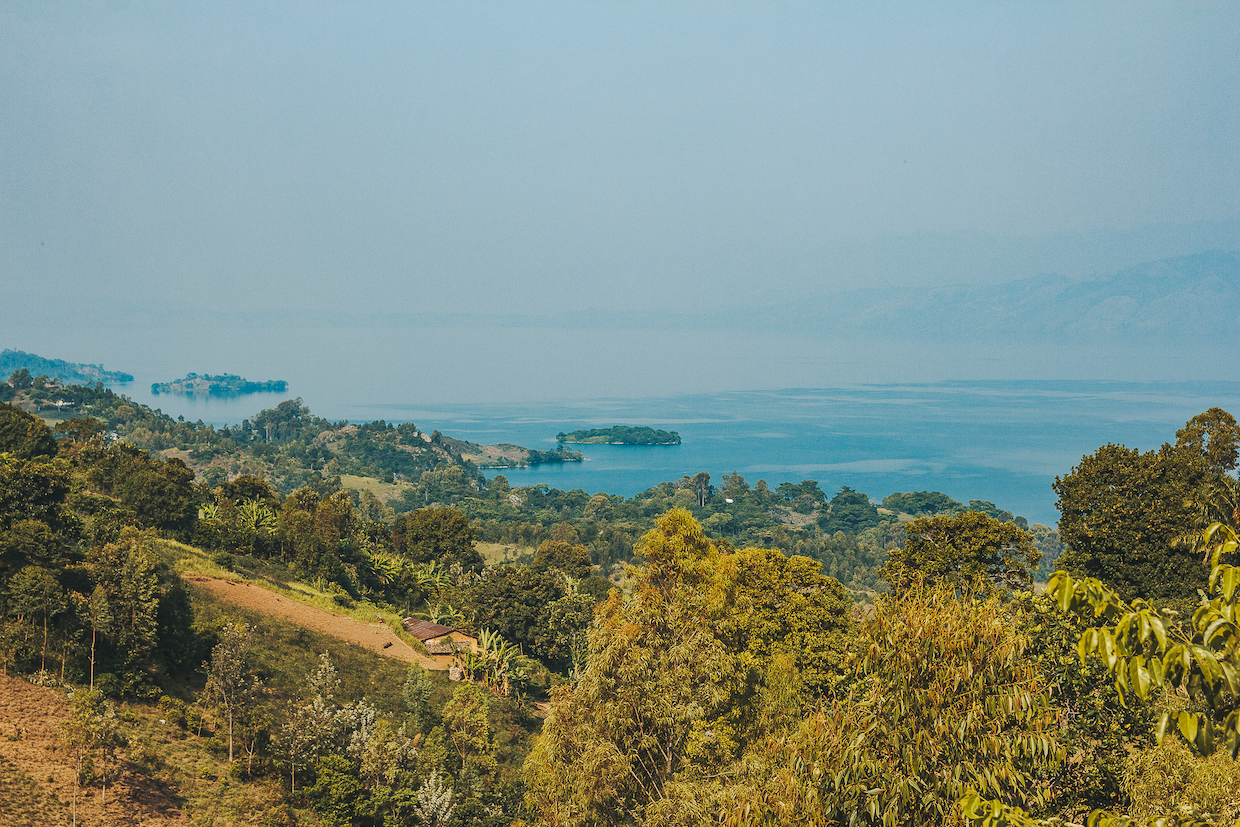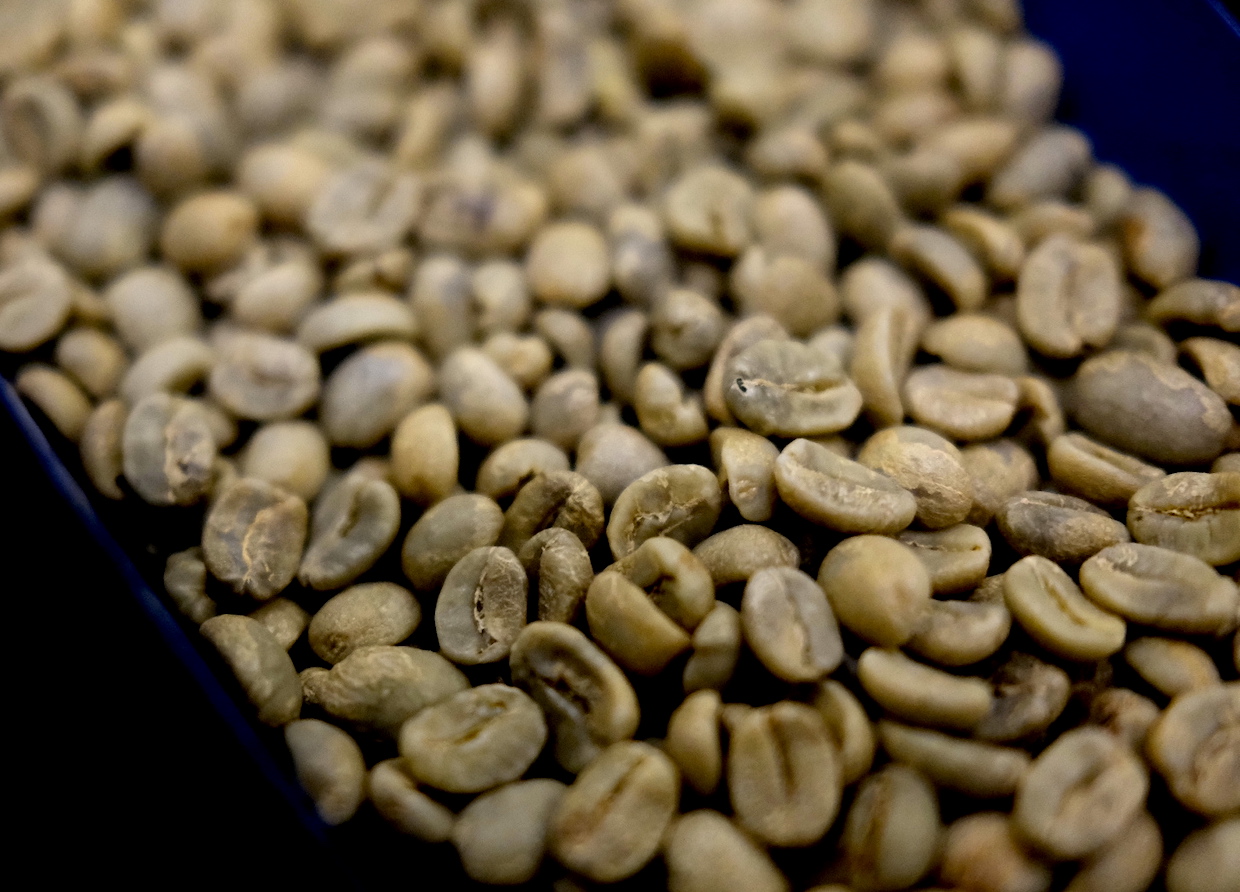
Coffee in Minova, on the shores of Lake Kivu. Photo by MNKF Creatives, courtesy of Mighty Peace Coffee.
The coffee industry and its supply chains are complex.
The SCA’s coffee systems map identifies 27 stakeholders scattered across continents that make our industry run. Each participant has its own needs, incentives and challenges, including navigating the cultural, language and legal issues that naturally arise from international trade.
While there are many moving pieces involved in getting coffee from one end of the supply stream to the other, I believe roasters occupy one of the most influential positions. It is their dollars, tastes and relationships that have an outsized impact on where the money flows.
At the same time, I believe farmers occupy the most important role. Without their work, there is no coffee, and thus no industry.
Existing somewhere near the middle, importers have a critical role in aligning, connecting and facilitating the communication between roasters and producers. It is imperative for these lines of communication to be clear, for information and feedback to flow from the farm to the roastery, and vice versa.
One way to enhance communication is by asking questions. Here are eight preliminary questions roasters might ask importers to better understand the impact of their green coffee purchasing, particularly as it affects the communities where coffees come from.
These questions are not designed to cast judgment. Instead, they may propose a framework to help roasters better objectively understand their impact within the industry, while helping to ensure that the values of the companies they are working with are aligned towards sustainability.
How is the price of your coffee set?
Pricing is a universal business challenge, not just in coffee but in all industries. Books are written and classes are taught on how to set prices. Doing it well requires a basic understanding of economics, costs of production, costs of goods, the value of labor, the value of time, psychology, and so on.
In coffee, it can be difficult to get the data, and to know all of the underlying factors that could impact price, but understanding why you pay a certain price for a pound of coffee is invaluable information. This might be the C-price plus a differential, or a negotiation based on farmers’ costs of production and desired profit margins. Whichever method(s) you use ultimately determines how much money will flow back to the farms.
What is considered a living wage in the country/countries you import coffee from?
Merriam-Webster provides two definitions for a living wage:
- A subsistence wage
- A wage sufficient to provide the necessities and comforts essential to an acceptable standard of living.
Dictionary.com provides the following definition:
A wage on which it is possible for a wage earner or an individual and his or her family to live at least according to minimum customary standards.
These slightly different definitions have significant implications, and they’re just the first challenging point regarding this question. Is it about the bare minimum to survive or is it about the bare minimum to be comfortable? Is it about the wage earner’s ability to provide for themselves or to provide for their families?
Minimum and living wage debates are happening right now, from farms to coffee shops. In the United States, for example, even as minimum wage varies across states, one constant is that many coffee shops and roasteries nationwide are having a hard time hiring and retaining baristas, who are often paid a minimum wage.
The same applies to the living wages and minimum wage in coffee producing countries. You can likely find official information about what the government mandates as the living or minimum wages. The next step is understanding what’s actually enforced on the ground, as well as what is the standard of living of the people producing coffee.
Are they making the bare minimum to survive, to be comfortable, or are they making less than the bare minimum? If it’s less than the bare minimum, it will likely impact whether or not that coffee will be available in the coming years, or if farmers will abandon coffee.
Do you pay producers directly, through a cooperative or through another third party?
Depending on the region and country where your coffee comes from, your importer may purchase coffee through cooperatives, auctions, single estates and more. It’s important to understand the relationship between the entity that represents the producers responsible for your coffee as this entity’s cost structure and incentives also affect how much you pay for your coffee.
If you pay producers through a third party, how do you verify that producers received what they’ve earned?
Trust and long-term relationships are imperative for roasters and importers; but trust does not negate the need for third-party verification. There are plenty of unfortunate stories involving producers not being paid at all or significantly late, despite importers making payments on time. Are there mechanisms in place, either through your importer or some other party, to verify the timing and amounts of payments to producers?
What role(s) do women play in the value stream locally?
Insights into the role of women is critical. Data shows that women spend 90% of their earned income on their families (UNAC, 2012) and closing the gender gap in agriculture could lift 100-150 million people out of hunger (FAO, 2011). Understanding women’s role in the coffee you source also gives you a greater window into the impact of your purchase and its potential for long term sustainability.
What can be done to increase gender equity in the coffee industry in the country/countries you import coffee from?
Gender equity is essential for the longevity and health of communities. The more women are at the table, the more money they earn and the better it will be for the community. Nevertheless, this should not be dictated by foreigners, as most countries already have programs in place to foster inclusion of women. The key is to understand the existing plans to implement these programs in the local coffee industry. As these programs can determine whether a coffee you love will be available year after year.
What does the local coffee ecosystem in the producing country/countries need to thrive?
This will vary by country and by region since each ecosystem has a specific mix of resource needs such as transport infrastructure, security, energy and much more. Access to certain resources will increase the likelihood of coffees being available year after year, and these can be promoted through efforts such as government marketing, roaster participation in local coffee festivals, local quality control labs benefiting producers and more.
In addition to higher wages, what can be done to ensure our industry’s sustainability?
This is an open-ended question to further understand your importer’s values and perspectives on the long term sustainability of the coffee industry. Money is important and more money will help, but beyond money, what can be done? Access to education, healthcare and clean water, which can be taken for granted in most consuming countries, is often not a given in the rural areas that produce your coffee.
Why ask these questions?
The goal of these eight questions is not for roasters to become experts in socioeconomics. Roasters are experts in getting coffee ready for consumption, in unlocking flavors and qualities that resonate with their customers.
Instead, the goal of these questions is to help roasters better understand the impacts of their purchasing, as well as the goals, ambitions and practices of the organizations from which they are sourcing coffees.
There are at least 27 stakeholders actively involved in making our industry function, yet roasters, producers and the importers that connect them have substantial influence over where and how money circulates now and in future investments.
Thus, the purchasing decisions of roasters today play a significant role in determining whether or not there will be subsequent generations of farmers willing to produce coffee. This will in turn impact opportunities for subsequent generations of roasters.
[Editor’s note: Daily Coffee News does not publish paid content or sponsored content of any kind. Any views or opinions expressed in this piece are those of the author and are not necessarily shared by Daily Coffee News or its management. Do you have a story idea for DCN? Share it here.]
Jim Ngokwey
Jim N. Ngokwey lives in New York City and hails from the Democratic Republic of Congo (DRC). He is the Cofounder and Managing Partner of Mighty Peace Coffee, a social impact importer, specializing in Congolese coffee. Mighty Peace Coffee was founded in 2018, is headquartered in Madison, Wisconsin and Bukavu, DRC. Jim is a member of the Color of Coffee Collective, Young African MBAs and is the co-founder of Congolese Diaspora Impact Strategies.
Comment
4 Comments
Comments are closed.







Excellent article, great questions. Some are very hard to answer, even for people like me that work with coffee farmers in origin every day. E.g. the wages question.
Hello im a Guatemalan Coffee Producer of Finca Katharina Pacaya.
I will be interested in a potencial buyer.
@jim N., my frieind, great article! Thank you for writing what social impact importers are always thinking — good questions from roasters are so important!
@andy carlton and you comment about how you can work with farmers every day and not know the answers to these questions — condensing “answers” to roaster questions from the knowledge you have in your head is where a good social impact importer can help. It is part of the service we provide as a link in the value chain.
As an interested observer in Mexico, it’s clear here that most of the coffee gets produced by small producers, many if whom live on a subsistence (survival) budget. Many produce organic shade coffee but don’t have the means to fund a registration as an organic coffee producer.